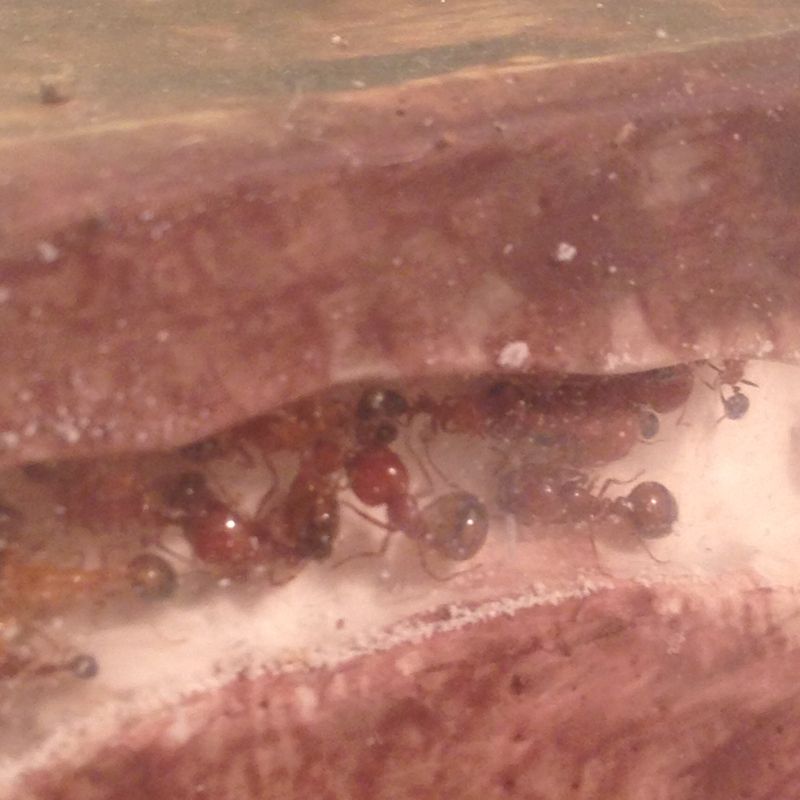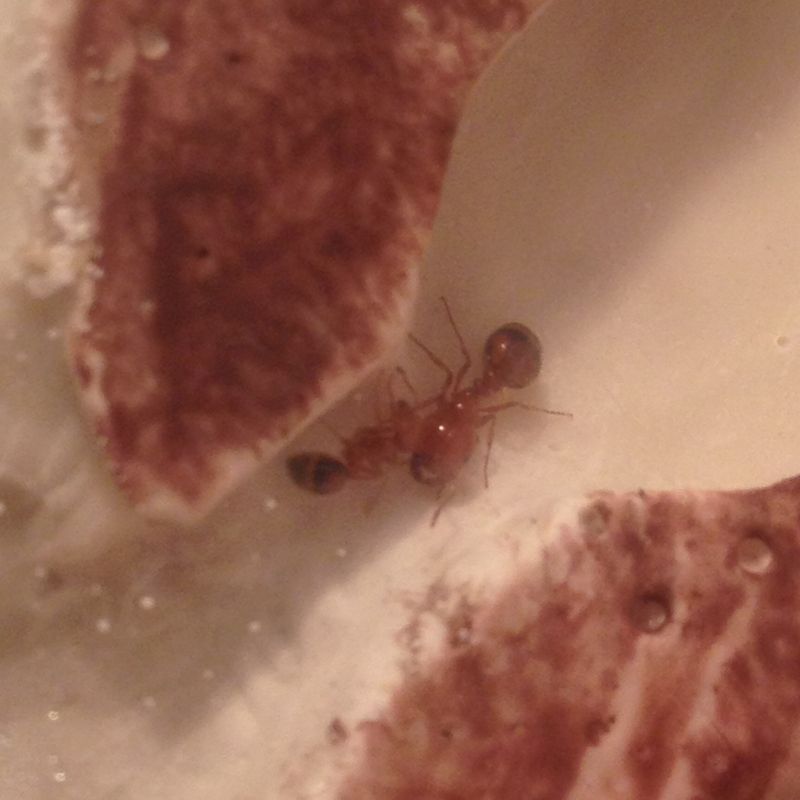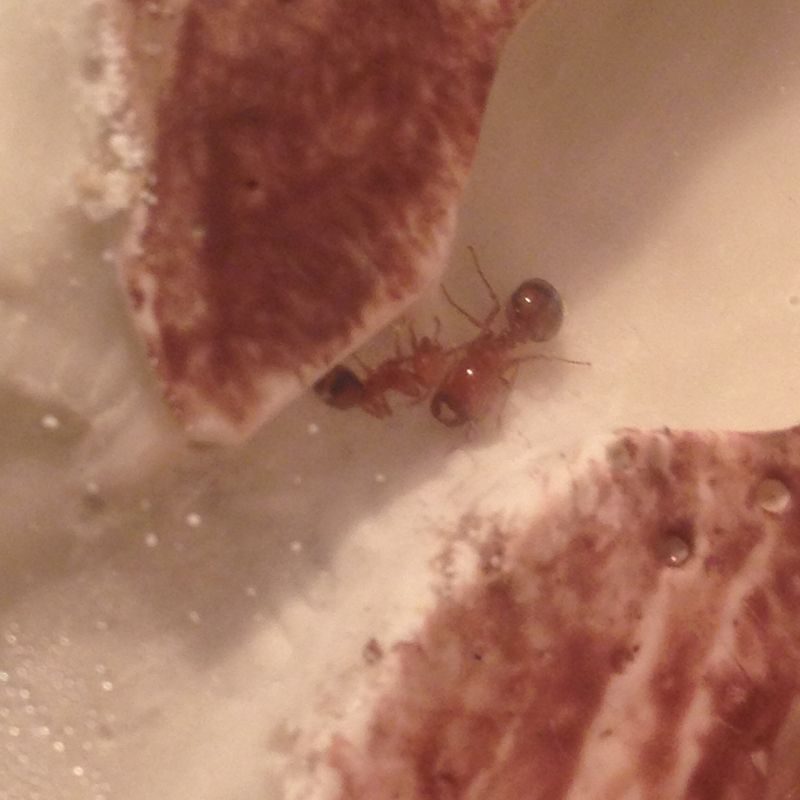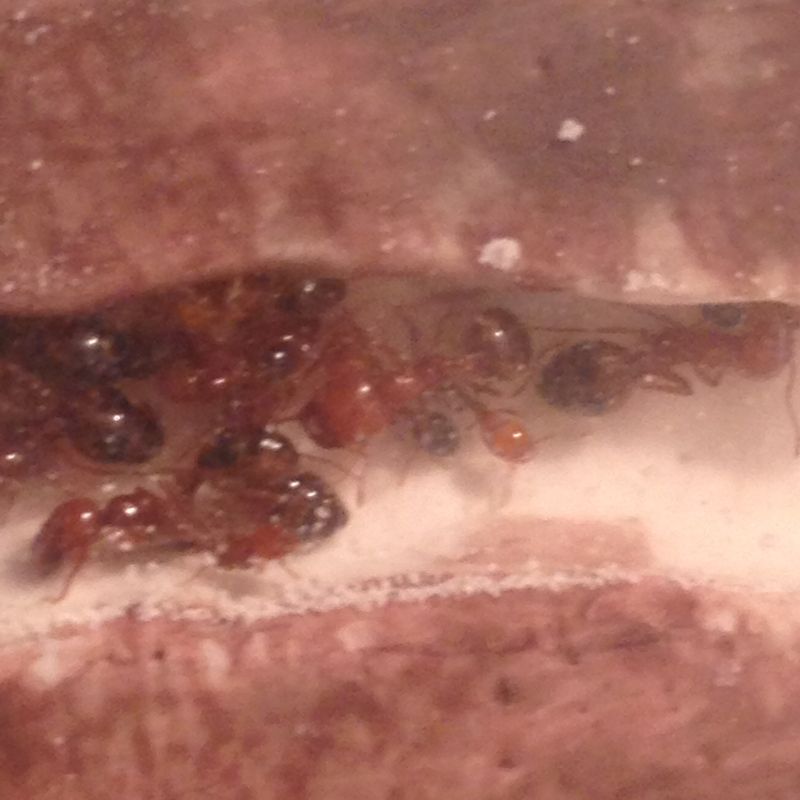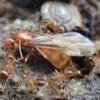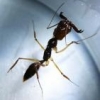Hello,
while looking for ants I came across a rather large colony of ants.
Collection Data
Date: 11/13/16
Location: Fresno, Ca
Habitat: cleared abandoned dirt field next to a pistachio nut tree orchard
Worker Size: The workers range in size from very small 2-3 mm sized ones to much larger major like workers ranging in size from 7-10mm
Color: The smaller workers had a fully black gaster with a light red to orange head and thorax. The larger workers had a red to orange head and thorax while the first part of the gaster was red-orange then striped with the red-orange and the last half is a deep glossy black.
Behavior: When I first came upon the nest all I could see was the smaller workers milling about, there were about 12 different entrances to their nest in about a .75 square meter area. When I began to disturb the nest the smaller workers ran away and the much larger workers appeared walking around with their mandibles out stretched chomping the air. This was rather surprising to me as just seconds before I thought it was a nest of just a bunch of small workers.
I collected about fifty trying to get several of each size. Oh also they had a pretty potent bite/sting. I got bit/stung buy a couple of the larger ones and they left red welts the size of US quarters for about 12 hours.
Of the few I collected I placed them in a formicarium I made for observation I tried to get some pictures these are the best I could do so far.
The largest of the ants seemed to be hiding amongst the cluster of smaller ants.
These are really interesting ants to me I would love to know what they are so I could obtain a queen at some point.
Thank you,
Jess



